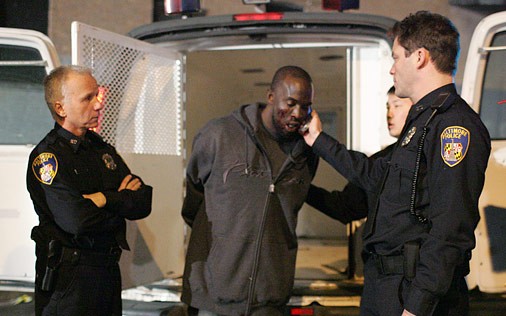
The odds of arrest are three times higher for people viewed as black, while those who self-identify as black but are not perceived to be by others are arrested no more often than those who are seen as non-black, according to a new UC Irvine-Stanford study. There must be a Rachel Dolezal joke in all this.
]
“We know race to be a multidimensional, extremely complex dividing line in our society, with some people identifying one way while others may perceive them differently,” explains Andrew Penner, a UCI sociologist and study co-author. “When it comes to explaining the racial disparity in arrest rates, we find that perception by others appears to play a more important role.”
Penner and co-author Aliya Saperstein, a Stanford sociologist, used data from the U.S. National Longitudinal Study of Adolescent to Adult Health to compare self-identified and observer-classified racial categorizations of nearly 11,000 participants, focusing on young adults who had conflicting categorizations.
According to Penner, 33 respondents ages 18 to 26 were classified as black by the interviewers but did not self-identify as being black, while 45 respondents identified themselves as black despite being classified as non-black by the interviewers. When examining arrest reports six years later, the researchers found that the first group had three times higher odds of arrest than people who neither self-identified nor were perceived as black.
The odds of arrest for those who self-identified but were not viewed as black were indistinguishable from consistently classified non-black subjects, according to the statistical analysis that also took into account behavioral, environmental and other factors associated with the likelihood of arrest, isolating racial perception as the key variable.
“We found that the odds of arrest are related to what others see, not what individuals say,” says Saperstein. “Those who were categorized by interviewers as black but did not self-identify as such had a sizable and statistically significant increase in the odds of experiencing a future arrest. Essentially, racial perception trumped their identity, giving them arrest experiences more like people consistently classified as black.”
Cautioning against generalizing the findings due to the small number of people with conflicting classifications, Penner noted the results do come at a time when reports of racial bias and discrimination in policing fill evening newscasts.
Click here to see the findings in the June issue of Demography, the flagship journal of the Population Association of America, but know that purchase is required.
Email: mc****@oc******.com. Twitter: @MatthewTCoker. Follow OC Weekly on Twitter @ocweekly or on Facebook!

OC Weekly Editor-in-Chief Matt Coker has been engaging, enraging and entertaining readers of newspapers, magazines and websites for decades. He spent the first 13 years of his career in journalism at daily newspapers before “graduating” to OC Weekly in 1995 as the alternative newsweekly’s first calendar editor.

